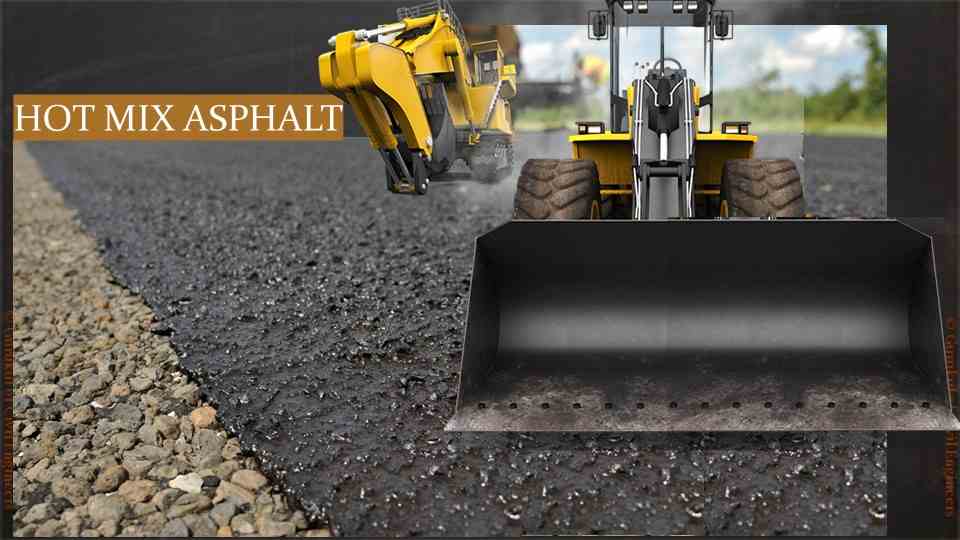Opening the Keys of Warm Mix Asphalt Modern Technology
Checking out the depths of warm mix asphalt innovation discovers a globe where careful processes and precise solutions assemble to shape our roads and infrastructure. The blend of binders, fillers, and aggregates isn't just a building job but a critical orchestration of toughness and effectiveness.
Relevance of Hot Mix Asphalt
Warm Mix Asphalt plays a vital role in modern-day infrastructure advancement due to its longevity and cost-effectiveness. As the most generally used leading material for roads, freeways, and car park, Hot Mix Asphalt supplies a variety of advantages that contribute to its significance in building and construction projects. One crucial benefit is its capacity to stand up to rush hour tons and rough climate condition, giving a lasting and trustworthy surface for transport networks. In Addition, Hot Mix Asphalt is affordable in both preliminary building and construction and long-term maintenance, making it a favored choice for lots of framework tasks.
The longevity of Warm Mix Asphalt stems from its composition, which consists of accumulations, binder, and filler materials that are meticulously chosen and mixed to fulfill certain efficiency demands. In general, the relevance of Warm Mix Asphalt in infrastructure growth can not be downplayed, as it proceeds to be a foundation of modern construction techniques.
Parts of Asphalt Mixes
The make-up of asphalt blends consists of thoroughly picked accumulations, binder, and filler materials that are important for achieving certain efficiency needs. Aggregates are the primary element of asphalt blends, giving toughness and stability. The binder, generally bitumen or asphalt cement, holds the accumulations with each other and gives flexibility and resilience to the mix.
The combination and proportion of these elements play a considerable function in identifying the high quality and efficiency of the asphalt mix. Engineers very carefully create the mix to meet details needs, taking into consideration factors like traffic quantity, environment problems, and sidewalk life expectancy. Appropriate choice and balancing of aggregates, binder, and fillers are important for creating durable, lasting asphalt pavements.
Mixing and Manufacturing Strategies

As soon as the accumulations are picked, the binder, often asphalt concrete, is contributed to bind the materials together. The binder's quality and quantity significantly impact the mix's strength, flexibility, and resistance to environmental factors. Additionally, fillers like moisturized lime or Portland cement might be included to improve certain attributes of the web link asphalt mix, such as its workability or wetness resistance.
During production, the accumulations and binder are heated up, normally between 250-325 ° F(121-163 ° C ), to facilitate blending and make certain appropriate finish of the aggregates. The mixing procedure needs to be extensive to achieve an uniform combination that advertises the desired efficiency features of the asphalt. Different techniques, such as set mixing or drum mixing, are used to accomplish consistent and high-grade asphalt mixes for building and construction jobs.
Factors Influencing Asphalt Performance
Variables influencing asphalt efficiency incorporate a range of variables that affect the durability, durability, and total quality of asphalt pavements. One crucial variable is the quality of materials utilized in the asphalt mix.

Style factors to consider, such as sidewalk density and drainage, are vital in making sure the lasting efficiency of the asphalt sidewalk. By carefully considering these professionals, engineers and factors can optimize asphalt performance and boost the solution life of sidewalks.
Lasting Practices in Asphalt Innovation

Additionally, the growth of warm-mix asphalt (WMA) innovations has gained grip recently. WMA enables for the production and placement of asphalt blends at reduced temperatures contrasted to typical hot-mix asphalt, leading to decreased Check Out Your URL energy usage and greenhouse gas discharges. The usage of porous asphalt blends can assist mitigate stormwater drainage problems by permitting water to penetrate through the pavement and right into the ground, promoting all-natural water filtering and reenergize processes. By implementing these lasting practices, the asphalt sector can add to constructing a more resilient and eco pleasant facilities network.
Verdict
To conclude, warm mix asphalt modern technology plays an important function in modern-day framework growth due to its resilience and cost-effectiveness. By very carefully stabilizing components, employing correct mixing techniques, and considering various factors, designers can produce premium asphalt blends that stand up to rush hour tons and severe weather condition conditions. Embracing sustainable practices, such as making use of warm-mix modern technologies and recycled products, additionally improves the environmental friendliness of asphalt innovation.
Blending and manufacturing techniques article in hot mix asphalt modern technology entail the exact combination and processing of accumulations, binder, and fillers to produce a high-performance and durable asphalt mix.Factors affecting asphalt performance include an array of variables that influence the longevity, durability, and general quality of asphalt sidewalks. Sustainable techniques in asphalt innovation encompass numerous efforts aimed at lowering the environmental influence of asphalt manufacturing and paving procedures. By integrating reclaimed asphalt sidewalk (RAP) and recycled asphalt shingles (RAS) right into new asphalt blends, the industry can dramatically minimize the consumption of raw products and energy, while likewise decreasing garbage dump waste.
WMA allows for the production and placement of asphalt blends at reduced temperatures contrasted to conventional hot-mix asphalt, resulting in lowered energy intake and greenhouse gas emissions.